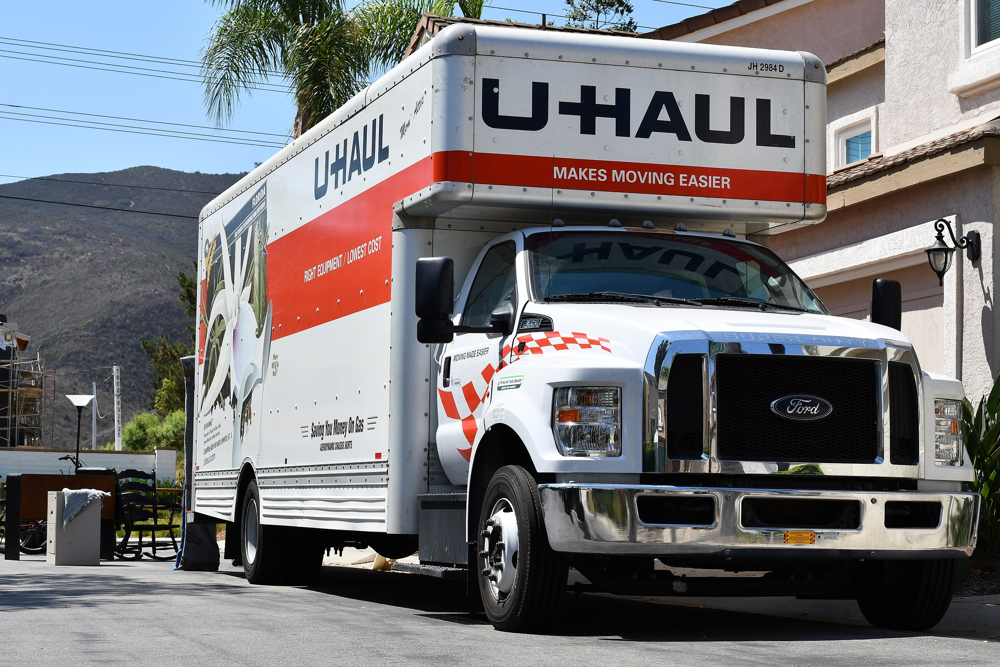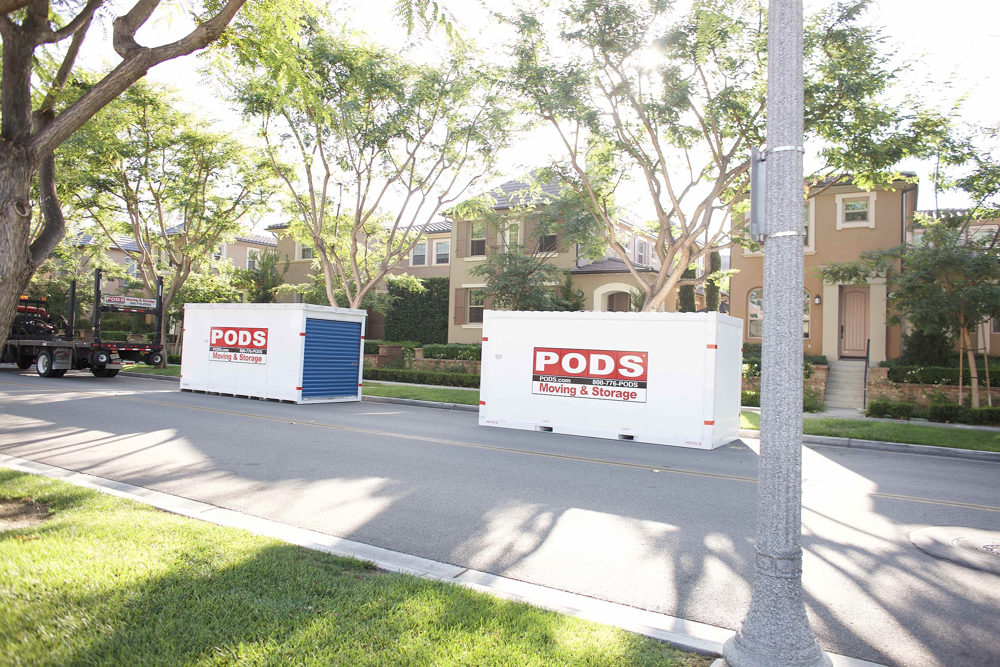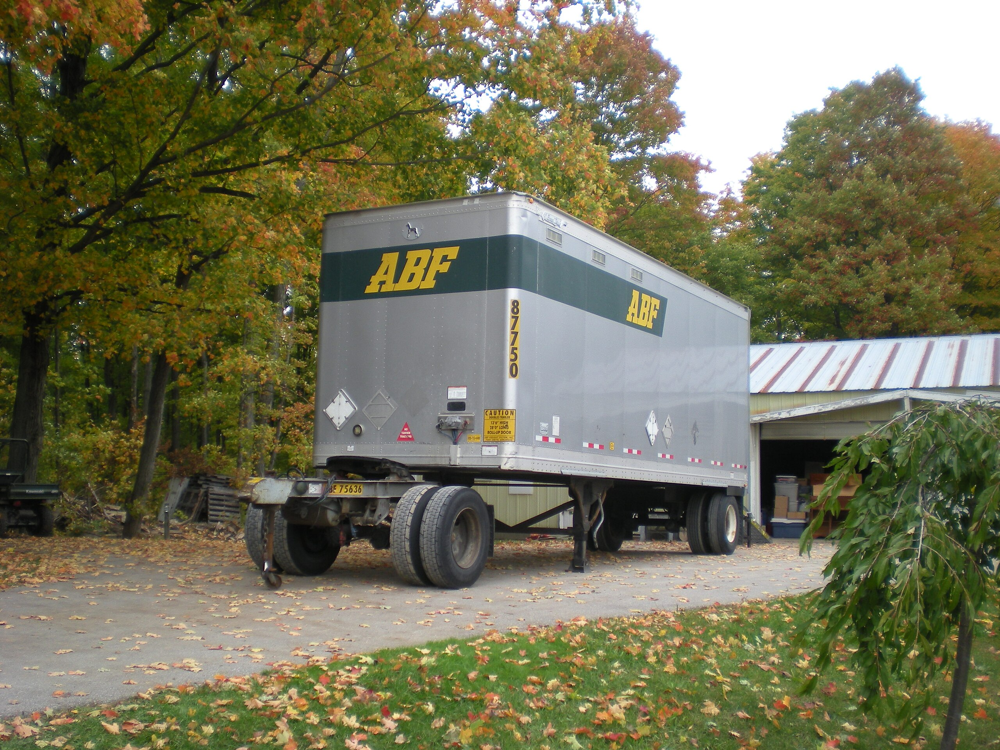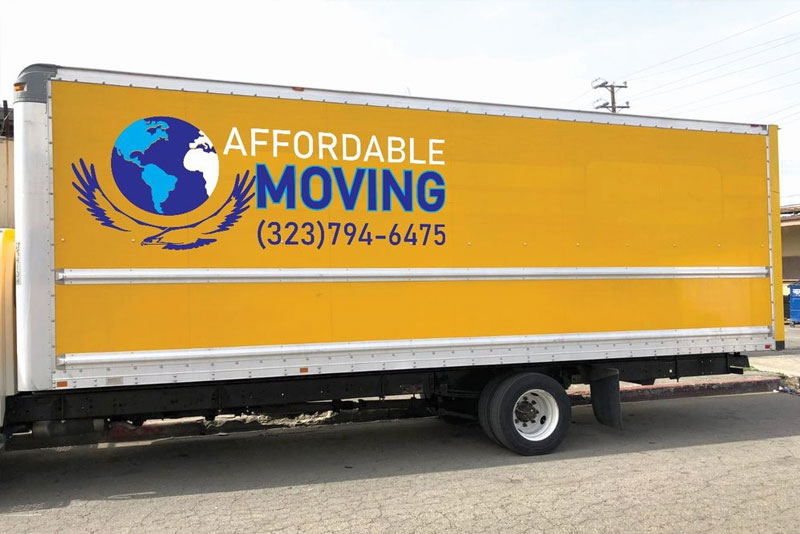Moving a house full of furniture long-distance can be expensive. In fact, the average long-distance move (around 1,000 miles) for a 2–3 bedroom home costs about $4,890. Why so high? Long-distance furniture moves involve transporting heavy, bulky items across many miles – which means paying for large trucks or containers, fuel, and often professional labor. In this article, we’ll explore the cheapest ways to move full-home furniture long distance and compare costs for different home sizes (1-bedroom, 2–3 bedroom, 4–5 bedroom). We’ll also give pro tips to save money and discuss when it makes sense to hire professionals movers like Affordable Moving LLC (Los Angeles).
Why Are Long-Distance Furniture Moves So Expensive?
Relocating an entire home’s furniture isn’t like shipping a small package – it’s a big operation. Costs add up from multiple factors:
- Volume & Weight: A full home (even a 1-bedroom apartment) includes large, heavy furniture pieces. Movers often charge by weight or space. For example, a 2–3 bedroom load (~7,500 lbs) costs around $5,000–$9,000 on average to move 1,000+ miles.
- Distance & Fuel: The farther you move, the more fuel a truck consumes. Large moving trucks get poor gas mileage (often ~8–10 MPG empty, even less when loaded), so fuel alone can cost several hundred dollars on a cross-country trip.
- Labor & Time: Long-distance moves often span several days. You may need to hire help for packing, loading, driving, and unloading or invest your own time and effort. If you hire a full-service moving company, you’re paying for many hours of skilled labor.
- Equipment & Logistics: The cost of renting moving equipment (trucks, trailers, or containers) and any storage or insurance add-ons will increase the total. Also, long-haul drivers and logistics coordination (routes, schedules) add to the expense.
Overall, moving all your furniture cross-country can easily run into thousands of dollars, so finding cost-saving methods is key. Below, we compare the major options to achieve a budget-friendly move of an entire home’s furniture load.
Major Cost-Saving Furniture Moving Methods
There are four common ways to move a household’s furniture long-distance on a budget. We’ll discuss each and provide realistic price examples for a 1-bedroom move, a 2–3 bedroom move, and a large 4–5 bedroom home. The methods (from most DIY to full-service) are:
- Renting a Moving Truck (DIY)
- Using Portable Moving Containers
- Shipping via Freight Trailer
- Hiring Professional Movers – full-service moving companies that handle everything
We’ll break down the costs, pros and cons of each:
1. DIY Truck Rental

Renting a moving truck for a long-distance move is often the lowest-cost option upfront. You pick up a box truck, load your furniture, drive it to the new location, and return the truck. Major companies offer one-way rental trucks in various sizes (e.g. 10-foot for small moves up to 26-foot for large homes).
- Cost: Truck rental prices depend on the truck size, distance, and duration. One-way long-distance rentals include a fixed mileage allotment. For example, a 1-bedroom apartment might use a 10-foot truck — roughly $1,500–$2,500 for a cross-country move (including rental fee and estimated fuel). A larger 2–3 bedroom home might require a 20-ft or 26-ft truck; rental quotes could be around $2,000–$4,000 for a ~2,500-mile move. For a 4–5 bedroom house, you’d need the biggest 26-ft truck (or multiple trucks) – expect around $3,000–$5,000 for a cross-country trip after adding fuel and possible extra mileage fees. (Example: U.S. News reported about $2,661 for a 10-ft truck vs $4,481 for a 26-ft truck on a cross-country route)
- Fuel & Hidden Costs: Remember, fuel is not included in base rental rates. You’ll pay for gas (a coast-to-coast drive can easily exceed $500 in fuel for a loaded truck). Also budget for tolls, and possibly lodging and meals during your road trip. These travel costs can add up – one reason moving containers can sometimes rival truck costs (containers include transport, so you avoid paying for food/hotels while driving).
- Labor: With a DIY truck, all labor is on you (and any friends or labor helpers you hire). You’ll be packing, lifting, and driving a large truck. For long distances, not everyone is comfortable piloting a 20+ foot truck across states.
- Pros: This method typically has the cheapest base price. You have full control over timing (you drive on your schedule). It’s great for those on a tight budget who don’t mind doing the work. You can also tow a car behind in many cases.
- Cons: It’s labor-intensive and stressful. Long hours on the road in a heavy truck (often without rear-view mirrors and with lower speeds) can be exhausting. You’re responsible for any accidents or truck damage (rental insurance is extra). Additionally, fuel costs and one-way drop fees make long-distance rentals more expensive than they first appear.
Real-World Example: Moving a 2-bedroom worth of furniture ~1,000 miles with a DIY truck might cost about $1,100–$2,000 in truck fees plus ~$500 in fuel. That’s around $1,600–$2,500 total, assuming no extra labor costs. In comparison, the same move with a full-service mover could be $5,000+. This highlights why renting a truck is popular for budget-conscious movers.
2. Portable Moving Containers

Portable moving containers are a convenient, cost-effective alternative. Companies deliver a storage container to your driveway. You load your furniture into it (or hire local labor to help), then the company picks up the container and ships it to your new home (often by truck or rail). You unload at your destination, and they take the empty container away.
- Cost: You typically pay a single fee that covers container rental, transportation, fuel, and a certain rental period (often including 1 month storage if needed). For a 1-bedroom worth of furniture, usually one container (like a 8’x7’x7’ or a 16’ POD) suffices. A long-distance move for 1 container might cost around $2,000–$3,500 depending on distance. For a 2–3 bedroom home, you may need 2 containers (or one large 16-ft plus one smaller) – costs could be roughly $4,000–$6,000 for cross-country (e.g. PODS averaged about $4,128 for ~3 rooms over ~1,500 miles). A large 4–5 bedroom house might require 3–4 containers, which can get expensive – perhaps $8,000–$12,000 cross-country (at that point, a full moving truck or freight trailer might be more efficient). Moving three bedrooms ~2,800 miles with PODS costs about $3,000–$5,000, whereas full-service movers would be $4,500–$9,000.
- Convenience: This method is often hailed as the “best of both worlds.” You get a fixed price (no worrying about gas or driving) and flexible loading time – usually you can take a few days to load your container at your own pace. It’s great if you need storage, too: many companies let you store the container for a month or more (often included in the price).
- Labor: You still handle the packing and loading, unless you hire help. But you do not have to drive a truck. Once loaded, you lock the container and the company’s driver transports it. Transit times are typically about 1–2 weeks cross-country, though expedited options may be available.
- Pros: No driving or fuel costs for you – transport is included. Greater security than a DIY truck because your items stay in the same locked container throughout (less handling means less damage risk). Ideal if you don’t want to drive a truck and might need storage at destination.
- Cons: Cost can approach or equal truck rental for long moves, especially if you need multiple containers. You must have space to place the container at your home. And you still need to do the heavy lifting of furniture in and out (or pay local movers for loading services). Additionally, scheduling the drop-off and pickup requires coordination (you might be without your stuff for several days during transit).
Real-World Example: For a 2-bedroom move from Los Angelesto New York (~2,800 miles), one might use 2 PODS containers for about $7,600 total (quote for two 16-ft PODS including transport and one month storage). The same move (28-foot trailer space) might come in a bit less, say $5,000–$6,000, since charges by used space. These container options often beat full-service mover pricing – which could be $7,000–$10,000 for that size/distance – making them one of the cheapest ways to move furniture long-distance.
3. Freight Trailer Shipping

Another budget-friendly method is to use a freight shipping service to move your furniture. Companies offer a 28-foot freight trailer that they drop at your location. You load your furniture (often you only pay for the linear feet you fill), then the trailer is hauled by a tractor-trailer driver along with other freight. This is essentially using the LTL (less-than-truckload) freight network for moving household goods. If you have a very large home, you might even book a full 53′ trailer (FTL) through a freight broker, but most households don’t need that much space.
- Cost: Priced by space used (or weight, in some cases). For example, is 28′ long – if you only use 10 feet of it for your furniture, you pay for 10 feet (if you use more, you pay more, up to a cap). For a small 1-bedroom, you might use ~5–6 linear feet (~one ReloCube worth), costing perhaps $1,000–$1,500 for a few hundred miles, or around $1,500–$2,500 cross-country. A 2–3 bedroom home might fill about half the trailer (~14 feet), roughly $2,500–$4,000 for a long-distance move. A 4–5 bedroom house could approach a full 28′ trailer. These prices often include fuel and door-to-door transport. (For reference, a full professional van line 53′ trailer exclusively for a large home can easily be $10k+, so using a freight trailer you load yourself is cheaper).
- How it Works: The trailer is parked at your home (you typically get 2–3 days to load). It comes with a movable divider wall. After loading your section, you secure your goods and install the divider – separating your stuff from other commercial freight that may share space. The driver then picks up the trailer and it goes through the freight network to your destination, where it’s dropped off for you to unload.
- Pros: Cost-effective for large moves. You get charged only for the space you use. It’s often cheaper than multiple containers for big moves. Also, no need to drive a truck. Transit is fairly fast (often 3–7 business days cross-country) and your items stay on the same trailer (limited handling). Great for 4+ bedroom moves where rental trucks would require multiple trips or very large vehicles.
- Cons: You still must do all the loading/unloading or hire help. You need a place to park a big trailer (28 ft trailer + cab clearance, usually about 40+ ft of space). In city areas, this can be challenging – sometimes you’ll need a permit or to load quickly from the street. Also, scheduling is key: usually you have a short window to load/unload before rental fees apply. Insurance coverage for freight may be limited (often basic carrier liability based on weight, unless you purchase extra coverage).
- LTL Shipping for Small Loads: If you only have a single piece of furniture or a very small load, you might consider LTL freight without the trailer drop – for example, palletizing a furniture piece and using a freight carrier. However, LTL carriers are best for partial moves, not full homes.
Real-World Example: A family moving a 3-bedroom household from Chicago to Texas used about 18 feet of a trailer and paid roughly $3,200 total. In comparison, their quotes for full-service movers were around $6,000+. For a larger 4-bedroom move from California to Georgia, using the entire 28-ft trailer might cost ~$6,000, whereas a moving company quote for that weight/distance could be $12,000 or more. Freight trailers clearly can be the cheapest way to move a large house, as long as you’re willing to handle the labor and logistics.
4. Hiring Professional Long-Distance Movers (Full-Service)

The most hands-off (and typically most expensive) option is to hire a full-service moving company to move your furniture long-distance. With full-service movers, a trained crew will pack (optional), load, transport, and unload all your belongings. Companies can range from large van lines to smaller regional movers. While this option isn’t “cheap,” it’s worth understanding the costs and scenarios where it makes sense.
- Cost: Full-service movers charge based on the weight of your goods, distance, and any additional services (packing, special handling, etc.). For a 1-bedroom apartment moving long-distance, you might pay around $2,000–$3,500. A 2–3 bedroom home (average ~7,500 lbs) could cost roughly $5,000–$9,000 for a cross-country move. For a large 4–5 bedroom house, budgets of $10,000–$15,000+ are common for coast-to-coast service. (These figures include loading, transport, unloading, basic insurance – packing services or additional insurance would cost more.) It’s the priciest method, but you’re paying for convenience and labor.
- What’s Included: The moving company provides a truck (or several trucks) and typically a dedicated crew. They handle all the heavy lifting. Standard long-distance quotes include loading furniture, protecting it with blankets/padding, transportation, fuel, and unloading. Many companies also include basic liability coverage (e.g. $0.60 per pound per item coverage) and offer full-value insurance for an extra fee. Some offer additional services like packing your boxes, furniture disassembly/reassembly, storage in transit, or even white-glove setup – each for additional charges.
- Pros: Easiest for you. The movers do the work while you travel by car or plane to your new home. This greatly reduces physical strain and stress. Professional handling also reduces damage risk – they know how to wrap and load properly. Delivery is fairly fast (usually a dedicated truck will deliver within a week for cross-country, though it can be longer if combined shipments). You also have recourse if items are damaged (through insurance/coverage claims).
- Cons: Highest cost. You’re paying for labor and convenience – often 2×–3× the DIY cost. You also have less control over scheduling; you must work on the mover’s timeline for pickup and delivery windows. There’s also a risk of moving scams or rogue operators with very low quotes – one must vet movers carefully (check licensing, reviews). Finally, while you don’t carry the physical burden, it can be stressful to hand over all your possessions to a third party and wait for the delivery.
Pros and Cons Comparison of All Methods
To summarize, here is a side-by-side comparison of the four moving methods in terms of cost, labor required, convenience, speed, and insurance coverage:
| Moving Method | Approximate Cost (long-distance) | Labor & Effort Required | Convenience & Flexibility | Speed of Transit | Insurance Coverage & Protection |
|---|---|---|---|---|---|
| DIY Truck Rental | Lowest upfront cost. e.g. ~$1,500–$3,000 for 1-2 bedrooms (plus fuel); ~$3,000–$5,000 for 4–5 bedrooms. Fuel, tolls, lodging extra. | High effort: You do all packing, loading, and drive the truck yourself. May need to recruit help for heavy lifting. | Moderate convenience: You control the schedule and route, but driving a large truck long-distance is stressful. Must handle truck pickup/return logistics. | Variable speed: You decide the travel timeline, but driving time can be multiple days. No waiting for delivery – you arrive with your stuff. | Limited coverage: Basic truck rental insurance doesn’t cover cargo by default. You can buy add-on insurance, but your items’ protection is limited (often your own risk). |
| Moving Container | Moderate cost. e.g. ~$2,000–$4,000 for 1-2 bedrooms, ~$4,000–$7,000 for 3+ bedrooms. Transport, fuel included. | Medium effort: You pack and load the container. No driving required. Can hire local labor for loading if needed (extra cost). | High convenience: Container is delivered to your door. You typically get days to load/unload at your pace. Great for when you need storage time. No need to drive anywhere. | Moderate speed: Shipment typically takes 1–2 weeks cross-country. You might be without your items for several days, but you can often track shipment. | Basic coverage included: Most container companies include some coverage (e.g. $10K liability). You can often purchase additional insurance. Less handling means fewer opportunities for damage. |
| Freight Trailer | Moderate cost (scales with size). Often cheaper than multiple containers for large moves. e.g. ~$2,000–$4,000 for 2–3 bedrooms, ~$5,000–$7,000 for a full 28-ft trailer cross-country. | Medium effort: You load and unload your household into the trailer. No driving the truck. May need to meet a driver’s schedule for drop-off/pick-up. | Moderate convenience: Trailer dropped at your location, but requires enough space to park. Time window for loading/unloading may be limited (usually 1-2 days without fees). More planning needed for urban areas. | Fast transit: Comparable to container shipping – often 3-7 days cross-country since it moves via freight network. You might get your items quicker than container if on a direct route. | Basic carrier liability: Included coverage is low (freight default ~$0.10/lb or specific minimal coverage). Many offer added insurance options for household goods. Items are stationary in one trailer, reducing handling damages. |
| Full-Service Movers | Highest cost. e.g. ~$2,500–$5,000 for 1-bedroom, $5,000–$10,000 for 2–3 bedrooms, $10,000+ for 4–5 bedrooms (exact prices vary widely by distance/weight). | Low effort (for you): Crew does all packing (if added), lifting, loading, driving, unloading. Your main job is to inventory and supervise. Easiest physically and time-wise. | Very high convenience: Door-to-door turnkey service. They handle logistics and scheduling. However, you have to align with their pickup/delivery windows. Offers peace of mind and time saved. | Fast to average speed: Often movers give a delivery spread (e.g. 1-2 weeks cross-country). Dedicated shipments can be quicker (a direct truck). You don’t have to personally travel with the load, which frees you up. | Included basic protection: Typically $0.60 per lb per article is included (minimal). Full-value protection available for purchase (covers repair/replacement of items at their value). Professional packing and handling also means lower risk of damage overall. |
Table: Comparison of moving methods by cost, required labor, convenience, speed, and insurance. (Note: Costs are illustrative for long-distance moves ~1,000–2,500 miles; actual quotes will vary. Insurance refers to cargo protection for your goods.). Want to estimate your long-distance move? Try our moving calculator now.
As the table shows, truck rental is cheapest but demands the most work, while full-service movers offer maximum convenience at a premium price. Moving containers and freight trailers fall in between – often providing good value for medium to large moves when you’re willing to do the loading yourself.
When It Makes Sense to Hire a Pro Mover Like Affordable Moving LLC
While DIY methods save money, there are situations where paying for a professional moving company is worth it. How do you know when to hire the pros? Here are some scenarios:
- Large or Complex Home Moves: If you have a 4–5 bedroom house (or lots of bulky, heavy furniture like pianos, pool tables, large sectionals), the logistics of a DIY move can be overwhelming. Multiple truck loads, special equipment, and heavy lifting challenges can make a full-service mover the safer choice. Pros have the manpower and tools (dollies, hoists) to handle oversized items safely.
- Long Distance + Difficult Drive: Not everyone is up for driving a 20-foot truck thousands of miles through mountains or busy highways. If your move is coast-to-coast or involves tricky routes, you might prefer letting a professional driver handle it. This reduces risk of accidents or breakdowns on your journey – and saves you the nerve-wracking task of maneuvering a huge truck. Your focus can be on getting your family (and perhaps your car) to the new location safely by other means.
- Time Constraints: Perhaps you can’t take time off work or you need to move out and in on very specific dates. Professional movers can pack and move an entire household in a day or two, which might take you weeks on your own. If time is more valuable to you than the moving cost, investing in full-service movers buys you efficiency. For instance, corporate relocations or last-minute moves often rely on pros to meet tight deadlines.
- Fragile or Valuable Items: If you own high-value furniture (antique wood pieces, artwork, expensive appliances) that you worry about handling properly, professionals offer expertise and insurance. Affordable Moving LLC, for example, has experienced crews who know how to wrap and protect fragile furniture so it arrives intact. The peace of mind can be worth the cost when you have a lot at stake.
- Need for Additional Services: Professional movers can provide packing services, furniture assembly, storage, and other add-ons. If you need a one-stop solution – say you want your entire house packed for you, moved, stored for a month, and then delivered and unpacked – a company like Affordable Moving LLC can coordinate all of that. DIY options can’t easily bundle those services.
- Cost is Partially Covered: Sometimes a move is paid for or reimbursed by an employer (job relocation) or the government/military. In those cases, using a full-service mover is a no-brainer since your out-of-pocket cost is minimal. Even if not covered, if you can afford it, the reduced stress and physical strain has its own value.
In summary, hiring a professional mover makes sense when the convenience, safety, and time saved outweigh the higher price. Many families ultimately decide that entrusting the heavy work to reliable movers is well worth it – especially for long-distance relocations. Affordable Moving LLC, based in Los Angeles, is one such trusted mover that offers full-service long-distance moving at competitive rates. They provide personalized service, helping clients plan the move, safely pack furniture, and deliver on schedule. If any of the above scenarios apply to you, getting a quote from a pro mover can’t hurt – you might be surprised how reasonable the cost is once you factor in fuel, hotels, and your time for a DIY move.

